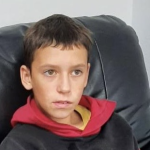Treatment of Autism Using the Montessori Method
This technique is based on the principle that during lessons, a teacher or therapist helps an autistic child independently perform various tasks to gradually develop their skills. This pedagogical methodology is used in the system of general education in schools and in institutions for children with special needs.
Montessori pedagogy for autism is an effective set of lessons with special methods designed for the most accessible education and upbringing of autistic children. It is aimed at revealing the child’s individual potential in an environment of independent and free activity.
Nothing is more capable of improving mental abilities than the expansion of the sensory spheres. If they are well-developed, a child can easily perceive new, complex information. For example, with the help of developed sensory skills, it is possible to obtain data even about such abstract concepts as size, colour, weight, or shape.
Features of the Montessori pedagogy for children with ASD
This is a comprehensive methodology that combines the content of the largest and most important sciences in the world. For example, concepts about geography, physics, biology, astronomy, etc. are integrated into educational programs. Thanks to this, a child develops a single holistic image of the world, where they can find their own place and learn to communicate with society using their individuality.
A very important point of this pedagogical approach is the revelation of a child’s ability to independently obtain knowledge with the help of personal feelings. All senses are involved in the process of cognition, and the child conducts experiments with different objects and substances, discovering their properties.
The Montessori pedagogy for autism places a great emphasis on the development of speech abilities and the deepening of sensorimotor skills. Many types of creative activities (drawing, drawing geometric shapes, shading, modelling, mosaics, etc.) are intended for this. At first, a child learns to control their body and express their thoughts with creativity, and only after successes in these areas does it become possible to develop speaking and reading skills.
The result of treatment for autism with Montessori therapy and the format of lessons
After these lessons, the child will be able to independently perform various actions and communicate with others in the future. The child will acquire vital experience and useful skills. This is not just the development of creativity and speech as preparation for school, but full preparation for life and the correction of symptoms of the disease. The Montessori method for autism involves individual and group lessons in specialised institutions for autism or in private preschool institutions.
A unique procedure of cellular correction at the Mardaleishvili Medical Centre is many times more effective than Montessori pedagogy and other methods.
This is an innovation in the treatment of childhood autism spectrum disorder that works towards a better future. So, therapeutic effects can be enhanced, particularly with the help of classes using the Montessori method.
Advantages of stem cell correction for childhood autism:
- Cellular renewal of the brain
- Maximum possible inhibition of pathogenesis for the body of a patient
- Improving speech and mental abilities
- Strengthening protective functions of the immune system, etc.
Undergo treatment of childhood autism using cell therapy — it will be a major contribution to a healthy future!
Autism Treatment Center Videos
Autism treatment with own stem cells
Cord blood association congress
International Quality Crown
Autism Treatment Reviews
Autism treatment with own stem cells
The story of Alessandro (6 years old)
Autism Patient Testimonial - Stem Cell Treatment
Clients Testimonials

Feedback from Igor, David’s father (12 years old) Read More

Feedback from Olga, Fedya’s mother Read More

Feedback from Natalia, Radomir’s mother (15 years old) Read More

Feedback from Esther, Samuel’s mother (8 years old) Read More

Feedback from Abibe, Selim’s mother (7 years old) Read More












